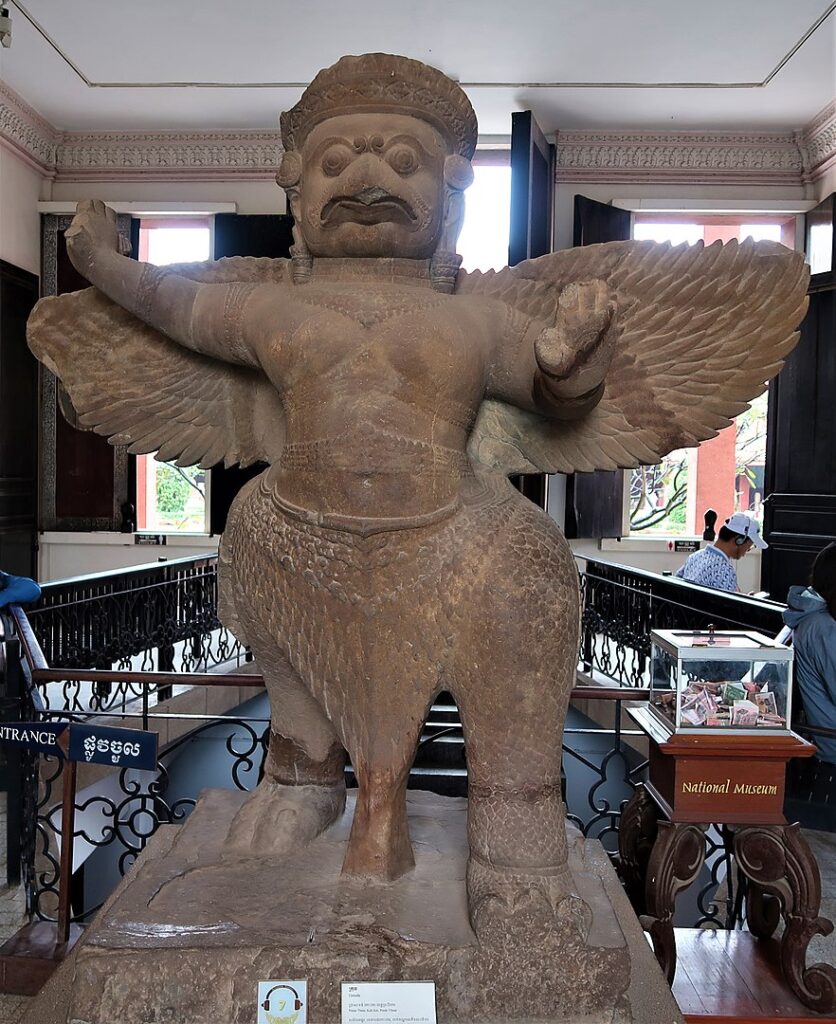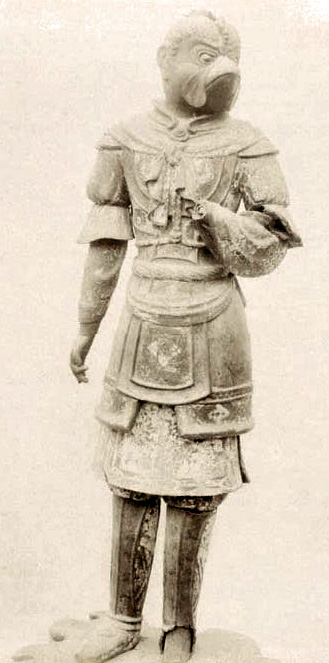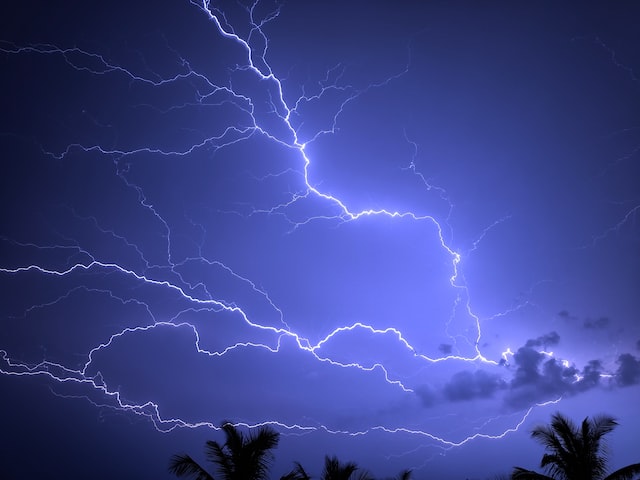
A sandstone statue of Garuda made in the 1st half of the 10th century, during the Angkor period, on display at the National Museum of Cambodia (image credit: User aks.9955 own work distributed on a Creative Commons, CC BY-SA 4.0, license).
Table of Contents (The Complete Mahabharata in Simple English)
Previous Post: Sage Kasyapa’s Decision Regarding a Second Indra
| Note: In the previous post, we read about how Sage Kasyapa arbitrated on the matter of the second Indra. It balanced Brahma Deva’s appointment of the current Indra as well as the sacrifice of the Valakhilya Sages. In this post, we will return to the battle between Garuda and the Devas for amrit. If you remember from earlier posts, disturbing omens started appearing in heaven when Garuda flew towards the abode of the devas to seize the amrit and free his mother from slavery. When Indra and the other devas realized what was happening when they went to their teacher, Brihaspati, to inquire about the omens. The devas prepared for battle in response to the threat. In this post, we will read about the fierce encounter between Garuda and the devas. |
Even though the devas were prepared for battle, they shook with fear when they saw the mighty Garuda approaching them. In that fear and the confusion that followed, some devas even struck one another with their weapons.
The first deva to fight Garuda was a deva called Brahmana. He was a celestial architect and was of immeasurable strength and bright like an electric fire. However, his encounter with Garuda did not last long. The great bird struck the deva called Brahmana with his beaks, talons, and wings, and within a moment, Brahmana lay dead on the battlefield.
Having vanquished Brahmana, Garuda flapped his wings with great force and raised a dust storm in heaven. Everything became dark and the devas, blinded by the dust, could no longer see their foe, Garuda. The mighty bird then struck the confused devas with his wings and beak and mangled them with wounds.
Seeing the devas confused and wounded, Indra (the deva of a thousand eyes) commanded Vayu to dispel the dust storm, and, following Indra’s command, the mighty Vayu drove away the dust giving respite to the devas. As soon as Garuda was visible, the devas attacked him in unison.
Garuda roared at the devas. His roar was like the sound that is heard in the universe at the end of the yugas. Garuda then ascended the skies with his mighty wings and swooped down attaching the devas who were with various weapons like double-edged swords, lances, arrows, simple maces, spiked maces, and discusses as bright as the sun. A fierce encounter took place between the devas and Garuda where the devas hurled their weapons with all their might at Garuda and, in response, Garuda moved swiftly and attacked them from all sides with his beak, talons, and wings.
The devas were no match for the mighty Garuda. Their bodies became mangled with the wounds inflicted by the great bird and they lay bleeding on the battlefield. The remaining devas fled to save their lives. The Sadhyas and the Gandharvas ran towards the east, the Vasus and the Rudras escaped from the south, the Adityas escaped from the west, and the Aswin twins fled in the northern direction. The devas, who were endued with great energy, retreated from the battle, making a few glances at their enemy while fleeing.
The valiant Yakshas, however, remained on the battlefield and continued to fight with Garuda. There was Aswakranda of great courage, Rainuka, the brave Krathanaka, Tapana, Uluka, Swasanaka, Nimesha, Praruja, and Pulina. They attacked Garuda with all their might, but the king of birds vanquished them with the power of his beak and talons and he wreaked havoc like the enraged Siva (the holder of the Pinaka) does at the end of a yuga. Those mighty and brave Yakshas, who fought without fleeing, lay dead, and the battlefield was filled with blood all around. After having vanquished the Yakshas, Garuda went to the place where the amrit was kept. He saw that the amrit was surrounded by a huge fire on all sides.
| Note: In the next post, we will find out how Garuda seized the amrit that was protected by multiple layers of security. |
Table of Contents (The Complete Mahabharata in Simple English)



